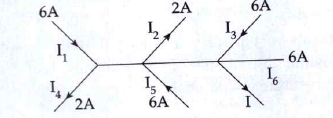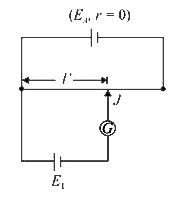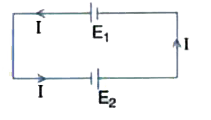Two cells having unknown emfs E1 and E2 (E1>E2) are connected in potentiometer circuit so as to assist each other. The null point is obtained at 8.125m from higher potential end. When cell E2 is connected so as to oppose cell E1, the null point is obtained at 1.25m from the same end compare the emfs of two cells.Solution in Marathi
Step by step video & image solution for Two cells having unknown emfs E_1 and E_2 (E_1 > E_2) are connected in potentiometer circuit so as to assist each other. The null point is obtained at 8.125m from higher potential end. When cell E_2 is connected so as to oppose cell E_1, the null point is obtained at 1.25m from the same end compare the emfs of two cells. by Physics experts to help you in doubts & scoring excellent marks in Class 12 exams.
Updated on:21/07/2023Topper's Solved these Questions
- Current ElectricityBOOK - CHETANA PUBLICATIONCHAPTER - Current ElectricityEXERCISE - Exercise
92 Videos
- AC CIRCUITSBOOK - CHETANA PUBLICATIONCHAPTER - AC CIRCUITSEXERCISE - Exercise
122 Videos
- Dual Nature of Radiation and MatterBOOK - CHETANA PUBLICATIONCHAPTER - Dual Nature of Radiation and MatterEXERCISE - EXERCISE
89 Videos
Similar Questions
(1)In the following circuit, calculate the value of the current (I).

View SolutionA LCR series circuit has the impedance of 240 ohm. If R = 120Ω, find the power factor of the circuit.
View SolutionDetermine frequency and wavelength of a photon having energy 1.3eW.
View SolutionTwo cells of emf E1.E2 and internal resistance r1,r2 respectively are connected to parallel combination. Determine the equivalent emf of the combination.
View SolutionFigure shows a potentiometer circuit, a cell of emf E1 is balanced by length l' of the potentiometer wire. If this cell is replaced by another of emf E2, it is found that total length of potentiometer wire has to be increased by 50%, in order to have the same balance length (l'). Then E1/E2 is______.

View SolutionE1,E2 are events of a sample sapce such that P(E1) =1/4 , P(E2∣E1)=1/2,P(E1∣E2)=1/4. Then P(E1∣E2)+P(E1∣¯¯¯¯E2)=
View SolutionTwo cells of emf E_1 and E_2 having internal resistance r _1 and r_2 are connected in parallel. Calculate Eeq and req for the combination.
View SolutionIn a potentiometer, a standard cell of emf 5V of negligible internal resistance maintains a steady current through Potentiometer wire of length 5m. Two primary cells of emf E1andE2 are joined in series with (i) same polarity (ii) opposite polarity. The balancing point are found at length 350 cm and 50 cm in two cases respectively.
(i) Draw necessary circuit diagram.
(ii) Find the value of emf E1andE2 of the two cells (if E1>E2)
View SolutionTwo cells of e.m.f. 's E1andE2 are connected in series in a circuit . Let r1andr2 be the internal resistance of the cells. Find the current through the circuit.

View SolutionA cell E_1 of emf 6V and internal resistance 2 Omega is connected with another cell E_2 of emf 4V and internal resistance 8 Omega (as shown in the figure). The potential difference across points X and Y is :
View SolutionWhen two cells of emfs. E_1 and E_2 are connected in series so as to assist each other, their balancing length on a potentiometer is found to be 2.7 m. When the cells are connected in series so as to oppose each other, the balancing length is found to be 0.3 m. Compare the emfs of the two cells.
View SolutionIn a potentiometer experiment, two cells of emf E1 and E2 are used in series in the secondary circuit. The balancing length is found to be 58 cm. If the polarity of E2 is reversed, the balancing length becomes 29 cm. The ratio E1/E2 of the emfs of two cells is :
View SolutionThere are two quadratic equations E1 and E2 Each root of E1 is four times to that of E2, and the minimum of E1 will be m times to-that of E2 Then m is
View SolutionTwo cells of emf E_1,E_2 and internal resistances r_1,r_2 respectively are connected in parallel combination. Determine the equivalent emf of the combination.
View SolutionTwo cells of emfs E_1 and E_2 and of negligible internal resistances are connected with two variable resistors as shown in Fig. A2.4. When the galvanometer shows no deflection, the values of the resistances are P and Q. What is the value of the ratio E_2/E_1 ?
View Solution
